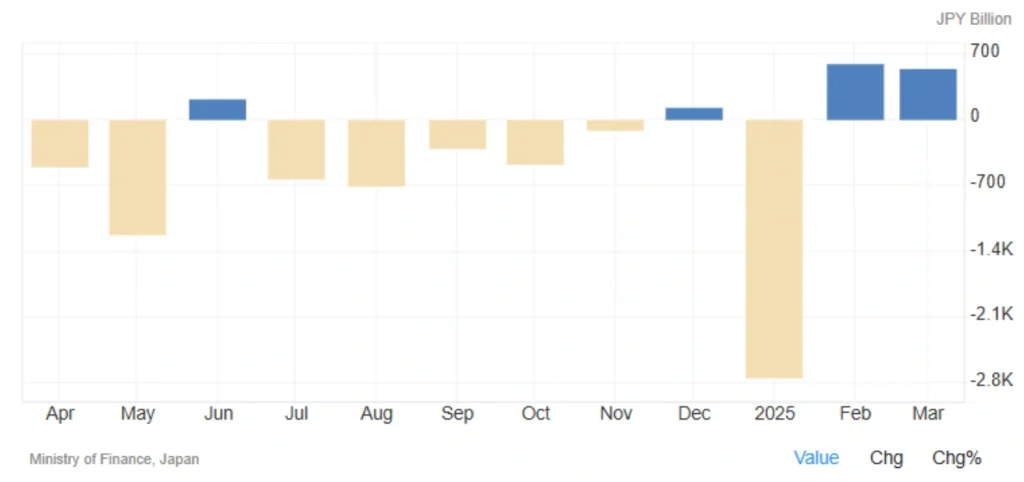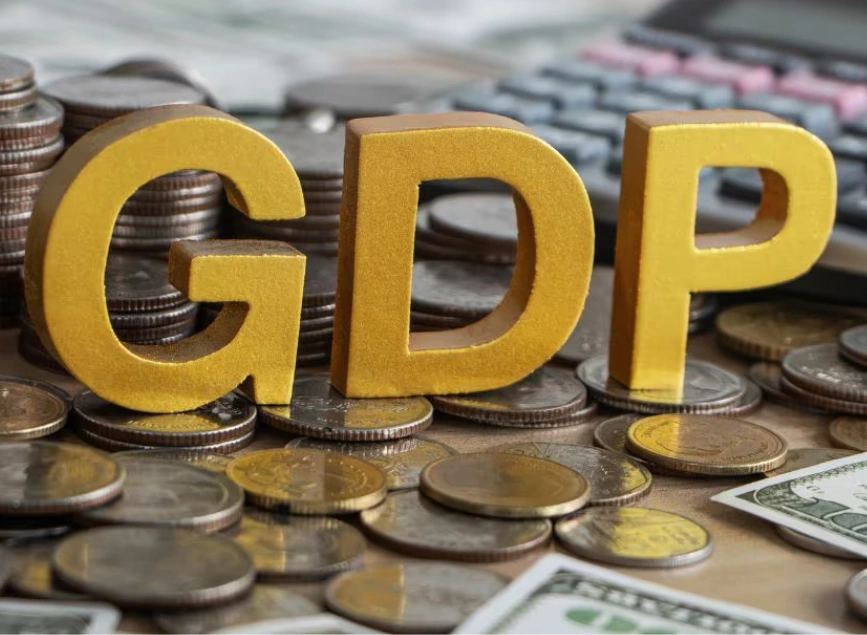
Japan’s Trade Surplus Reaches ¥544 Billion
Japan’s trade surplus for March 2025 reached ¥544.1 billion, surpassing market expectations of around ¥485.3 billion. This marks a significant increase from March 2024’s surplus of ¥349.9 billion, reflecting a strong export performance.
Japan’s Foreign Trade Details for March
✅ Exports:
- 📈 3.9% annual growth
- 💥 Total exports: ¥9,847.8 billion (highest level in the past three months)
- 📅 Sixth consecutive month of export growth
- Slightly below market expectations of 4.5% growth
- Key drivers:
- 🌏 Sustained demand from Asian markets
- ⚙️ Stronger industrial and technology exports
- 💼 Government support for export-oriented companies
✅ Imports:
- 📊 2% annual growth
- 📉 Total imports: ¥9,303.8 billion
- ✅ A recovery from the 0.7% drop in February
- Below market expectations of 3.1% growth
- Weak imports may be attributed to:
- ⛽ Falling energy and raw material prices
- 🏠 Lower domestic demand during the winter season
- 💱 Currency exchange rates and high import costs
Education: Why is Japan’s Trade Surplus Important?
- A trade surplus occurs when exports exceed imports, signaling strong manufacturing capacity and international competitiveness.
✅ For Japan, an export-driven economy, the growth in trade surplus means:
- 📈 Support for the Japanese Yen in the currency market
- 💪 Increased financial capacity for export companies
- 🚫 Reduced inflationary pressures from imports

📊 Impact Analysis: How This Data Affects Markets and Japan’s Economic Policy
🔹 Positive Signals:
- 🚚 Data indicates a strengthened export chain for Japan
- 📈 Sustained export growth could help support overall economic growth
- 🏦 In the short term, the Bank of Japan (BoJ) might use this data as a justification for policy rate stability
🔹 Concerns:
- ⚠️ Slower imports, if driven by weak domestic consumption, may signal imbalanced economic growth
- 🌍 Heavy reliance on exports, especially amid global trade volatility, is a risky strategy
✅ Conclusion
Japan’s impressive trade surplus in March 2025 highlights the strength of its global competitiveness. However, for future sustainability, it’s crucial to strike a better balance between exports and domestic demand. This data points to Japan’s resilient trade sector, but policymakers must also focus on domestic economic growth.
Share
Hot topics

What Is GDP? A Complete Guide to Gross Domestic Product
GDP or Gross Domestic Product is one of the most powerful indicators used in global economics. It plays a central role in the decision-making processes of investors, central banks, governments,...
Read more




Submit comment
Your email address will not be published. Required fields are marked *